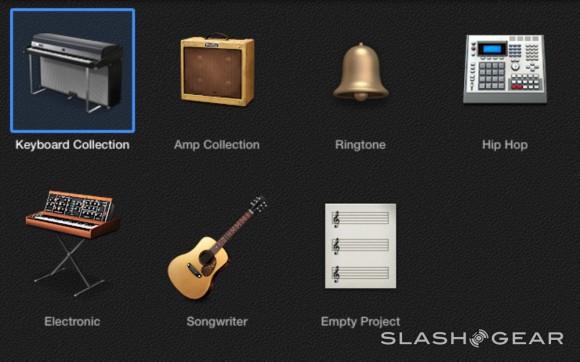- Videos For Garageband Instruments
- Garageband Instruments Download
- Garageband Instruments Not Showing Up
GarageBand inclusive of a standard keyboard instrument and a smart keyboard instrument. The keyboard in the GarageBand is set up like the standard keyboard and has a variety of keyboard instruments and some of which are customizable including grand pianos, electric piano, multiple organs, clavinet, synth tracks, and also the bass synth pads, and synths. GarageBand 2.0 features a new design to match iOS 7, an extended number of tracks per song, and new functions in the Sampler instrument. In 2016, Garageband received a new design, and in January 2017, version 2.2 was released with a number of new features including the Alchemy Synth previously only available on the desktop version. Little projects like this are really easy in GarageBand and do a great job of allowing you to mod your external instrument with some really powerful digital creativity. Take some time to experiment with the amp models and get used to the different sounds you have available. It’s designed to allow you to play Apple’s virtual instruments in a live setting, but also adds all of its loops and virtual instruments to Garageband after installation. April 5, 2016 lewis Reply.
Garageband makes it really easy to get in there and easily set up virtual instruments that come built-in. However, if you're going in to Garageband with the intention of using a third-party plug-in, you might be scratching your head at first.
In this Quick Tip, I'd like to show you how to easily set up a third party audio unit plug-in (like EZDrummer, Addictive Drums, Superior Drummer, etc).

In this tutorial, I'll be using Addictive Drums!

Step 1
Videos For Garageband Instruments
Create a Software Instrument Track!
Garageband Instruments Download
Step 2
In the Software Instrument Tab on the Right, press the 'Edit' Tab.
Step 3
Under the 'Sound Generator' heading, click where it says 'Piano'. It will always default to the 'Piano' instrument when you create a new track.
Step 4
In the drop-down list that appears, navigate to the 'Audio Unit Modules' section and choose your desired instrument. In my case, I'll choose 'Addictive Drums'.
Step 5

Once you select your instrument, a little orange Audio Unit Icon will appear, with your instrument next to it. But you still can't see it, right? Click the Orange 'Audio Unit' icon.
Step 6
Once you click the Audio Unit icon, your instrument will appear with it's graphically-friendly interface, ready for your use!
And that's really all there is to it! From here you can use your third-party instrument exactly the same as if you were using a built-in Garageband instrument! If you're using a MIDI Controller, you can trigger the instrument it the exact same way you would a regular Garageband Instrument.
One word of caution though: I would heartily recommend against running multiple versions of plug-ins like EZDrummer that use a lot of samples, or recorded audio. You can quickly eat up valuable system resources before you know it! Stick with one instance of EZDrummer, or Addictive Drums, and the rest should be smooth sailing!
Garageband Instruments Not Showing Up
Want to learn more? Check out these Garageband tutorials!

Garageband makes it really easy to get in there and easily set up virtual instruments that come built-in. However, if you're going in to Garageband with the intention of using a third-party plug-in, you might be scratching your head at first.
In this Quick Tip, I'd like to show you how to easily set up a third party audio unit plug-in (like EZDrummer, Addictive Drums, Superior Drummer, etc).
In this tutorial, I'll be using Addictive Drums!
Step 1
Create a Software Instrument Track!
Step 2
In the Software Instrument Tab on the Right, press the 'Edit' Tab.
Step 3
Under the 'Sound Generator' heading, click where it says 'Piano'. It will always default to the 'Piano' instrument when you create a new track.
Step 4
In the drop-down list that appears, navigate to the 'Audio Unit Modules' section and choose your desired instrument. In my case, I'll choose 'Addictive Drums'.
Step 5

Once you select your instrument, a little orange Audio Unit Icon will appear, with your instrument next to it. But you still can't see it, right? Click the Orange 'Audio Unit' icon.
Step 6
Once you click the Audio Unit icon, your instrument will appear with it's graphically-friendly interface, ready for your use!
And that's really all there is to it! From here you can use your third-party instrument exactly the same as if you were using a built-in Garageband instrument! If you're using a MIDI Controller, you can trigger the instrument it the exact same way you would a regular Garageband Instrument.
One word of caution though: I would heartily recommend against running multiple versions of plug-ins like EZDrummer that use a lot of samples, or recorded audio. You can quickly eat up valuable system resources before you know it! Stick with one instance of EZDrummer, or Addictive Drums, and the rest should be smooth sailing!
Want to learn more? Check out these Garageband tutorials!